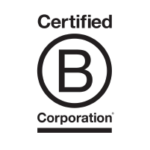Solar arrays will produce power for 25-30 years, and the attachment to the roof needs to last just as long.
The typical residential roof type that we install solar on is a pitched, asphalt shingle roof. Other pitched roof types include slate, tile, or metal roofs. Flat roofs are also feasible locations for solar arrays and typically require a different mounting system than pitched roofs.
We’ll focus on pitched, asphalt shingle roofs for this discussion.
In this case, a flush mount rail system with flashed attachments is usually the best option (Featured in each of the pictures). The solar panels are mounted on a rail system so that the panels sit about three inches off of the roof. This allows for an appropriate working space as well as airflow beneath the panels while creating a pleasing aesthetic appearance in which the solar array follows the lines of the roof.
The rails are attached to the roof via attachments that are flashed and sealed. The attachments are secured to the structural members of the roof with lag screws every four to six feet. This produces a secure and leak proof attachment system that is designed to withstand local wind speeds. In addition, dispersed roof loads are quite low, typically around three pounds per square foot – a roof load that is usually well within the parameters of a
structurally sound roof.













